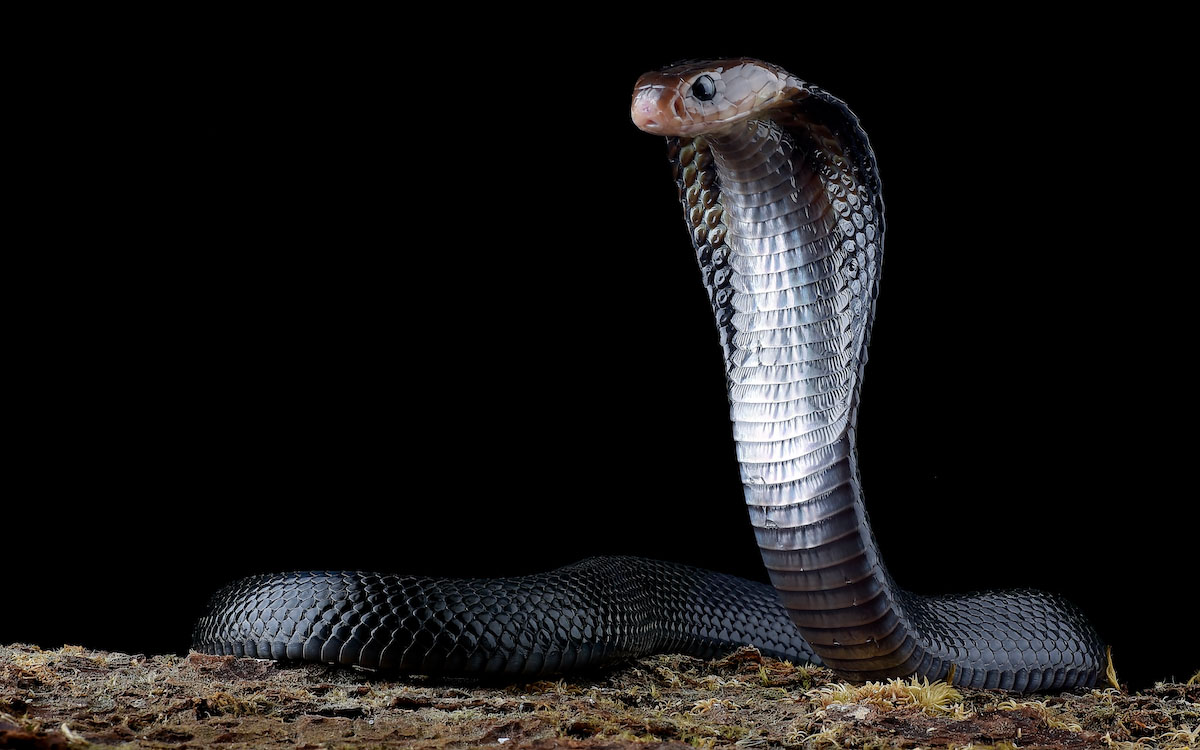Research shows Asia — not Africa — played cradle to snake superfamily that includes cobras, mambas and many common pet species

LAWRENCE — New research from the University of Kansas represents a scientific revision in the assumed origins of a group of snakes that include terrifying and highly venomous species as well as species widely popular as pets.
Based on the fossil record, it’s been assumed that elapoid snakes, found worldwide, had their origins in Africa. But the new KU study appearing in Royal Society Open Science — which depends on broad genetic sampling as well as fossils — points instead to Asian origins for these snakes.
Further, the investigation pushes back the origins of the snakes by 10 million years, giving evidence of Elapoidea as far back as 35 million years ago.
Lead author Jeff Weinell performed the research as part of his doctoral dissertation at the KU Biodiversity Institute and Natural History Museum.
“There was debate about the origins of these snakes,” he said. “There was an 'Out-of-Africa' theory for Elapoidea. This was largely due to the lack of a good phylogenetic estimate, meaning there wasn't a solid ‘tree of life’ for this group.”
Weinell and his co-authors changed that by conducting a broad analysis of snake biodiversity from around the world, with special attention on biogeography in the Philippines and the Asian region in general. He compared genetic data from museum specimens in KU’s world-renowned herpetology collection and other collections with the known fossil record.
“There were two main goals,” said Weinell, who today serves as an NSF Postdoctoral Fellow at the American Museum of Natural History. “One of them was to infer the tree of life for this group of snakes called Elapoidea, which is essentially about the evolutionary relationships among these different species in this group. We wanted to use this tree-of-life estimate, as well as information about where these different species occur geographically, to infer where the ancestor of this whole group originated and the timing of that. This was interesting to us because it tells us about how ecosystems change over time based on where different species occur.”
While the new findings on Elapoidea apply to a lot of snakes people have as pets, they also could inform the natural history of its sister lineage Colubroidea, which includes many other common pet species like corn snakes, according to Weinell.
“People are curious about the origins of their pets,” he said. “The answer to that, in a way, is Asia for the whole group we analyzed. These are the snakes that people would recognize.”
Weinell’s co-authors were Frank Burbrink of the American Museum of Natural History, Sunandan Das of the University of Helsinki and Rafe Brown, professor of ecology & evolutionary biology at KU and curator-in-charge of the herpetology division at KU’s Biodiversity Institute and Natural History Museum. Brown also served as Weinell’s dissertation adviser.
“This work includes analysis of the endemic, archipelago-wide Philippine family of snakes that Jeff discovered while at KU, the Asian region in general, and with a global impact in the form of repercussions involving the evolution of the scariest, and maybe the most medically important, snakes in the world — cobras, coral snakes, venomous sea snakes and their allies,” Brown said. “In this case, we rejected an old idea, the ‘Out-of-Africa’ hypothesis, for the origins of cobras and allies, which is not entirely surprising — but still, it’s a classic biogeographical scenario, relating to lots of the earth’s biodiversity, including, of course, diversity of modern humans.”
Much analysis depended on a broad genetic sampling of specimens collected around the world and stored at KU’s Biodiversity Institute and Natural History Museum and similar institutional collections globally.
“It’s important to be able to infer the ancestral distributions, and for that, you need good sampling of the existing species,” Weinell said. “We collected samples from almost every genus of snake, especially within the Elapoidea and Colubroidea groups. It was a very comprehensive study, not just at a taxonomic scale but geographically as well. Samples were from museums globally, but heavily from KU. I’d say the majority of the sampling came from KU’s collection."
According to Weinell, his study also reveals evidence that the origins of Elapoidea are much older than assumed previously.
“The timing of events can often be challenging to estimate,” he said. “However, this group of snakes was pushed further back in time. Initially spreading out of Asia, they reached Africa around 30 million years ago, Australia around 25 million years ago and the Americas around 15 million years ago. Since then, they have become a global group of snakes, having dispersed from their origins in Asia.”
Weinell said the work highlighted the value of museum collections in pushing forward our grasp of evolution and relationships between species, as well as showed off the strength of KU’s herpetology collection and academic training.
"I’d definitely like to plug KU and the Biodiversity Institute,” he said. “Museums like that are essential, and their collections are extremely important. Rafe has also done a fantastic job mentoring students, especially on biogeography projects. Overall, it was a great experience. I had the opportunity to do fieldwork and collect some of these samples myself in the Philippines and Solomon Islands. The Philippine samples were crucial for naming a new species, and a new genus, and for recognizing a new family of snakes — all of which are known exclusively from that archipelago and country."